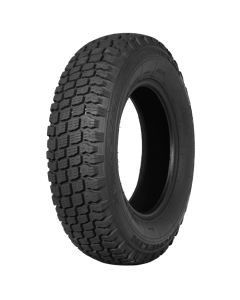Mercedes-Benz G Wagen Tyres
Mercedes-Benz G Wagen Classic 1979–1992

- The Mercedes-Benz W460 G-Wagen fitted 205 R16 tyres. The tyre that we recommend in this size is the 205 R 16 Michelin X M+S. These are perfect classic 4x4 tyres. Utilising the deep and well-defined tread to provide high performance off-road and using it's strong, flexible carcass, the 205 R 16 Michelin X M+S allows for a comfortable ride in urban settings too.
- The innertube we recommend for this tyre is the Michelin 16F Offset Valve Reinforced Inner Tube.
- For the short-wheelbase W460 G-Wagens, we recommend a standard pressure of 26 psi front and 29 psi rear, and a full load pressure of 26 psi front and 44 psi rear.
- For the long-wheelbase W460 G-Wagens, we recommend a standard pressure of 26 psi front and 26 psi rear, and a full load pressure of 26 psi front and 51 psi rear.
History of the Mercedes-Benz G-Wagen

One of two of Pope John Paul II's custom G-Wagen "Popemobiles" named the "Papa G" in the Mercedes-Benz Museum in Stuttgart.
The G Wagen's roots start in Iran of all places, as the Shah Mohammed Reza Pahlavi was a significant shareholder in Mercedes as well as the owner of many now-classic sports cars, including the first-ever Maserati 5000GT, which was named the Shah of Persia in his honour. The Iranian monarch suggested the G-Wagen concept for military use, and the development of the project began in 1972 with Daimler-Benz and Steyr-Daimler-Puch collaborating on the project in Graz, Austria, which is where the G-Wagen production factory would be constructed.
The start of the military applications for the vehicle would be with a rebadged version called the Peugeot P4 which was made under license in France with a different Peugeot-made engine. The first active service use of the G-Wagen was in the Falkland, where the Argentine Army used MB-203G models, and to this day, 900 remain in service. The RAF also captured one of these and was in service in the No. 18 Squadron for several years.
Civilian use of the vehicles wouldn't start until 1979, at its debut press event in Toulon, France. Sales began in September of that year with three engine choices and 5 body variants. In 1981, the G-Wagen received upgrades, adding automatic transmission, air conditioning, an auxiliary fuel tank, headlamp grilles, and a cable winch. In 1982 further upgrades were introduced, including fuel injection, seating upgrades, auxiliary heating, and fender flares. In 1985 another upgrade came around, this time standardising differential locks, central door locking and tachometers.
The W460 G Wagen ended production in 1992, making way for the W461 which is still under production for military use but was cancelled for civilian production in 2014. The W463 was also made as a separate chassis number in 1990 as the W463 had differentiated from the original principle of the G Wagen, focusing on a more luxurious function than its military derived utilitarian model did. This model provided the modern identity of the G Wagen, it has shifted from its military 4x4 roots to becoming premium celebrity transport.




